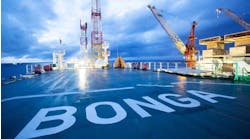Environmental, social and corporate governance (ESG) goals have become a widespread priority in the oil and gas industry as pressure mounts to curb global greenhouse gas emissions. Many oil and gas producers are leveraging digital and other new technologies as a means of meeting their ESG goals, which include lowering carbon intensity. In the US, efforts are ramping up as President Biden seeks new legislation to support his stated commitment to reduce US emissions by 50-52% from 2005 levels in 2030, create a carbon pollution-free power sector by 2035, and achieve a net-zero economy by 2050.
A cornerstone of Biden’s environmental objectives for the US are included in the “Build Back Better” bill, which passed the US House of Representatives in November 2021. It has language in it that bodes well for the offshore energy industry, including provisions that advance offshore wind and carbon capture and storage policies. One of the many promising terms for wind developers is the extension of the full credit amount of the production tax credit, at a base rate of $0.05/kwh or bonus rate of $0.025/kwh, through 2026.
But some of the oil and gas provisions are raising red flags, including the cost of operating an offshore lease (a full analysis of any changes to offshore leasing will be available in a future issue of Offshore). One provision in the bill for the oil and gas industry imposes a fee on methane emissions that exceed a threshold from an owner or operator of a facility that is required to report methane emissions. This includes offshore production platforms. The allowed methane intensity thresholds in the proposal are 0.2% for production and 0.05% for gathering and boosting. The targets would go into effect in 2023 with a phased introduction – 60% in 2023, 80% in 2024, and 100% in 2025. Analysts forecast about a $1 billion estimated cost impact in 2025, assuming producers continue output and methane intensity at 2019-2020 levels on average.
These fees would complement a US Environmental Protection Agency (EPA) rule limiting methane emissions from new and existing sources of oil and gas. Key components of the proposal include guidance on finding and repairing methane leaks at new and existing well sites, encouraging innovation of advanced measurement technologies, and eliminating venting of associated gas from oil wells. The proposed requirements call for the monitoring of well sites with estimated emissions of 3 tons/year or more. Once fully implemented, EPA projects that this proposed program will require routine monitoring at 300,000 well sites nationwide. The comment period for the proposed EPA rule should conclude in early January, and a final rule is expected by the end of 2022.
See inside for more ESG-related coverage and keep an eye out for a special section in the magazine on the topic beginning in 2022.




